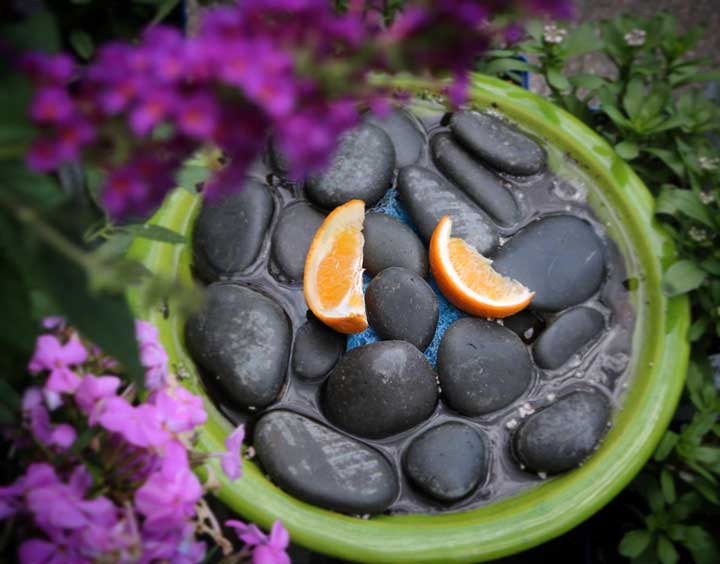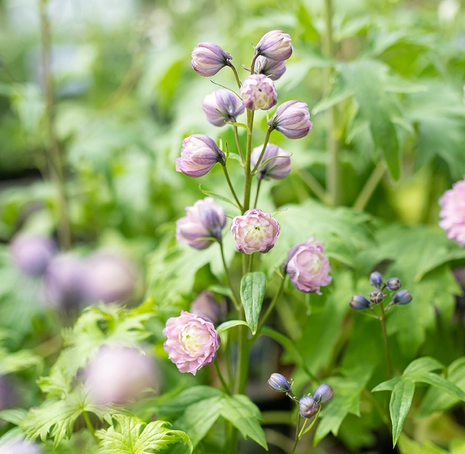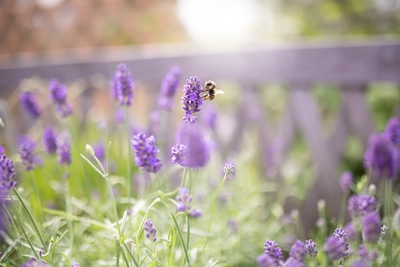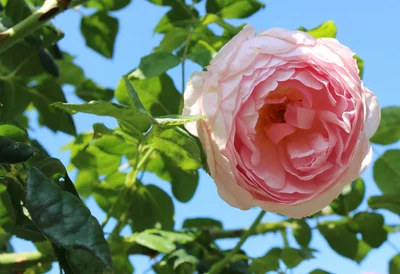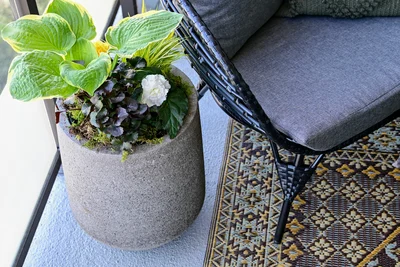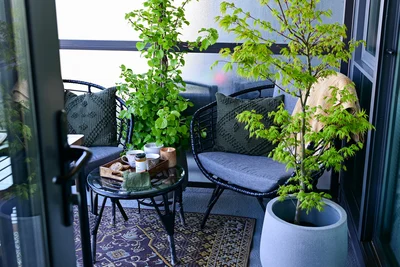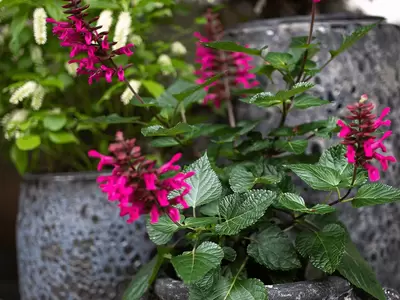
Written by Ingrid Hoff
Everybody loves the bees, butterflies and hummingbirds. Literally, I don’t have to put any effort into convincing people to create a garden that welcomes them in, people come to me looking for tips on how to create a butterfly garden, or plant something for the bees and hummingbirds. I should mention there are others other ways of pollination like ants, beetles, flies, wind and water… but let’s be honest, they just aren’t as interesting to talk about.
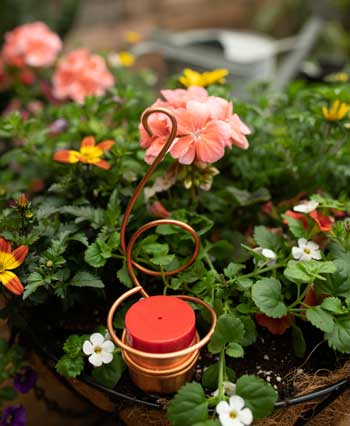 Before we get to the fun stuff, talking about plants to add to your garden, there are a number of easy things you can do to make your garden more inviting to the pollinators.
Before we get to the fun stuff, talking about plants to add to your garden, there are a number of easy things you can do to make your garden more inviting to the pollinators.
You can have your own hive (in a sense) and consider installing a mason bee house. These little houses are readily available at your local GARDENWORKS and come in a variety of shapes and sizes (to fit any garden). Be sure to get one with a removable insert (where the bees laid their cocoons) this will allow you to clean the house in case you get mites or disease.
Make a puddling spot. Butterflies need to drink water and they do it by slurping water out of wet muddy/sandy puddles. By repurposing a birdbath or large plant saucer and filling it with sand, pebbles and then water you create a perfect spot for the butterflies to land and have a drink.
Hummingbird feeders, there are lots of options available in all kinds of sizes and ways to hang them, but I have to say I’ve found my favourite. It’s made from bent copper wire that holds a small removable container you fill with sugar water, and has a hook so you can hang it from the branches of a tree/shrub. The same company makes them in bigger sizes and even on copper stakes so you can put them right into the ground. It is so attractive even when the birds aren’t using it, which to be honest isn’t often. Get down to GARDENWORKS and check them out, I am so glad I did.
My last tip is a little controversial, let things get a little wild. Many native bees, and a few butterflies, need to overwinter in gardens and may be quite thankful for some bark, dried leaves, hollowed out stems, open sandy patches, and even decomposing logs. Many butterflies come from caterpillars that feed on plant like thistles, nettles, and other plants that are eschewed by many gardeners as “weedy.” Buttercups, English daisies, and violets blooming in the spring lawn aren’t only pretty but a vital early spring source of nectar. So, if you can handle it, leave things a bit messy… or perhaps you’re already a bit of messy gardener and now you have a whole new justification. “I’m not lazy, I’m supporting the bees.”
But now on to the fun part, below are my top picks for attracting the different pollinators to your garden. I have to warn you, there are lots of great plants out there, this is in no way an exhaustive list, just ones that I really like and perform well. Also, there is lots of overlap between the bees and butterflies because well, they are both insects that are interested in nectar.
Top Plants for Bees
Lucky for us there are a wealth of bees out there that are native to our fair shores, actually more than 450 different species in BC alone. Bumblebees, leaf cutters, miner bees, mason bees, sweat bees, hairy belly bees, squash bees… there is a lot going on out there that we aren’t aware of. I like using blue/purple flowering plants because that is a colour bees see very well, the opposite being red, a colour they can’t see at all.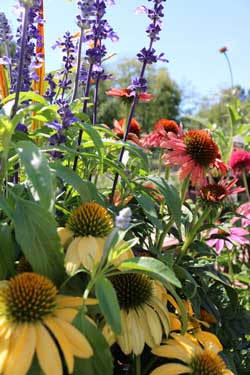
-
California lilac or Ceanothus sp is a beautiful shrub with small glossy dark green leaves and sky-blue early summer flowers. There are a number of attractive cultivars to check out.
-
Lavender, you all know it and love it, so plant some in a warm sunny spot. Enjoy the fragrant flowers but don’t forget to prune it back after it blooms. There are so many cultivars it’s hard to choose just one.
-
Pot marigold or Calendula officinalis is a bright orange and yellow annual daisy that is sure to brighten up any garden patch.
-
Borage or Borago officinalis an annual herb with an attractive star shaped blue flower. The whole plant is covered in hairs which give it a fuzzy silver appearance.
-
Catmint or Nepeta sp. is a perennial with silvery foliage that becomes an absolute mass of purple flowers. A very easy and rewarding plant to grow.
-
Salvia, come in a variety of different cultivars and colours, a great perennial to add to the garden.
-
Beebalm or Monarda didyma, the common name says it all. Even though these flowers come in both pink and red the bees still find them and love them. A lovely perennial with fragrant unique looking flowers.
Top Plants for Butterflies
I have a slightly delicate and awkward bit of information that I need to point out, butterflies come from caterpillars, and caterpillars… well…. they eat plants. I know, saying something like that is likely to ignite a murderous gleam in the eye of a gardener but, I think we need to cut them a little slack. Generally, most butterfly caterpillars don’t have population “booms” that can cause catastrophic damage in a garden, it’s more like one or two caterpillars taking a few bites for a leisurely lunch. So, accept a bit of munching on your plants from time to time and you’ll be rewarded with butterflies. You might even consider planting some parsley, dill or fennel, all of which the swallowtail caterpillars love. Or some milkweed for our elusive western monarch butterfly population. Good plants to include in your garden for attracting adult butterflies are ones that have nectar, just like the bee plants, but butterfly see all the colours.
-
Asters, come in shades of pink and purple, the daisy-like flowers are a welcome sight in the late summer garden.
-
Butterfly bush or Buddleia sp. avoid the native Buddleia davidii as it is weedy and has a tendency to look overgrown, instead check out many of the new cultivars that are neat, compact and not at all weedy.
-
Black-eyed Susan or Rudbeckia sp. glorious yellows, golds and red daisy-like flowers that shine in the late summer garden.
-
Coneflower or Echinacea sp. a lovely perennial plant with late season purple daisy flowers.
-
Milkweed or Asclepias sp. is a herbaceous perennial that is fundamental to monarch butterflies but still appreciated by others. They come in both red/orange and pink flowers.
-
Zinnias, amazing annual daisy-like flowers in a literal rainbow of colours.
-
Yarrow or Achillea millefolium is a drought tolerant perennial with a flat-topped umbel of flowers that can range in colour from white, yellow, pink and red.
Top Plants for Hummingbirds
Hummingbirds appreciate high nectar plants in all colours (but they tend to really like red) that generally have a tubular shape. I mean, have you seen their beaks, they are long and thin for a reason. So, any plant that fits this such as the bee balm mentioned above, columbines, dalylilies, foxgloves, salvias, or petunias are going to be appreciated. But there is one plant that above all else I recommend for hummingbirds.
-
Cuphea ‘Vermillionaire’ otherwise known as the firecracker plant or as I call it the “hummingbird magnet.” Literally, if you plant this they will come. It’s amazing and it works every time. Put one in a pot on your deck or in the garden and it won’t take long, I promise.
So, this year so a little something for the pollinators: plant a plant, get a mason bee house, or perhaps create a puddling area for the butterflies. Then sit back and enjoy all the life they bring into the garden.
